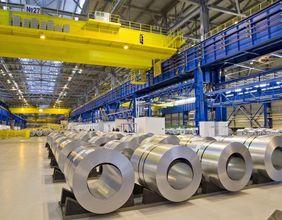Highlights
Return on Capital Employed has declined over time while total assets have increased
Revenue has consistently grown, indicating reinvestment into operations
Shareholders have seen substantial appreciation in stock value
Operating in the industrial metals and mining segment, as well as energy stocks, Mazarin Inc. (TSX:CVE) presents a case that intertwines capital deployment with expansion strategies. This space often involves cyclical revenues, infrastructure-heavy operations, and long-term capital commitments. Evaluating capital efficiency becomes essential in such an environment, particularly when key performance indicators reflect notable shifts.
Understanding Capital Efficiency
One of the primary tools to assess operational productivity is the Return on Capital Employed, which measures how effectively a company turns its capital into profit before interest and taxes. For Mazarin, the current return sits in line with its sector peers. While it mirrors the industry level, the actual rate remains modest when viewed without comparison.
Historically, the company's capital returns were stronger. In previous years, the return was at a higher level, indicating a decline over time. This trend, when coupled with concurrent asset and revenue growth, points to reinvestment in operational expansion. A decrease in return on capital may result when profits are redirected into assets that have yet to reach full productivity.
Revenue Growth and Asset Expansion
Mazarin has seen increases in both its top-line earnings and asset base. Such growth is often associated with projects designed to increase future output. While these developments can lead to immediate dilution in performance ratios, they also reflect an active approach to scaling operations.
Growth in total assets often involves fixed investments such as equipment, infrastructure, or mineral rights. These additions typically require time before translating into increased returns. As these assets mature, their impact on productivity metrics can become more visible.
Performance in Equity Markets
The company’s market valuation has experienced upward momentum over a multi-year period. This rise in equity price may indicate that expectations for operational growth are already reflected in market behavior. Share price appreciation, particularly when aligned with reinvestment strategies and revenue expansion, often accompanies business cycles focused on structural development rather than immediate yield.
Observations on Efficiency Trends
Mazarin’s declining capital efficiency is notable. However, in sectors where operations are capital-intensive, such movements are not uncommon. What becomes relevant is how well these investments are aligned with longer-term revenue generation. When capital is deployed into new or expanded operations, the initial output might not immediately match the capital cost, influencing key ratios downward even amid operational scale-up.
Operational Indicators
When assessing entities in the industrial mining segment, capital turnover, margin trends, and long-term asset growth all provide critical insight. Mazarin reflects growth in operational capacity, while efficiency has moderated. Watching how these elements progress over future cycles may offer further context into the company’s evolving structure.
Maintaining Financial Awareness
In a landscape shaped by market cycles, staying updated with operational metrics and company reports is essential for interpreting changes in company performance. Shifts in capital efficiency, especially when paired with asset growth and market performance, can signal transformations in the operating model or changes in strategic direction.





